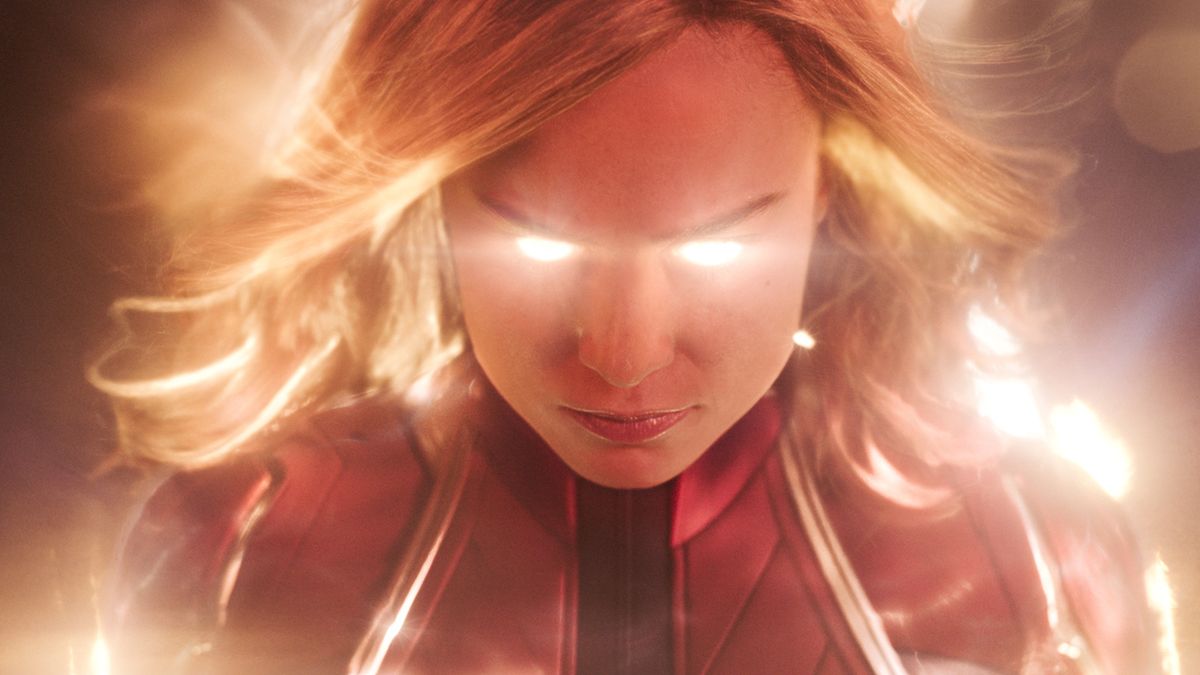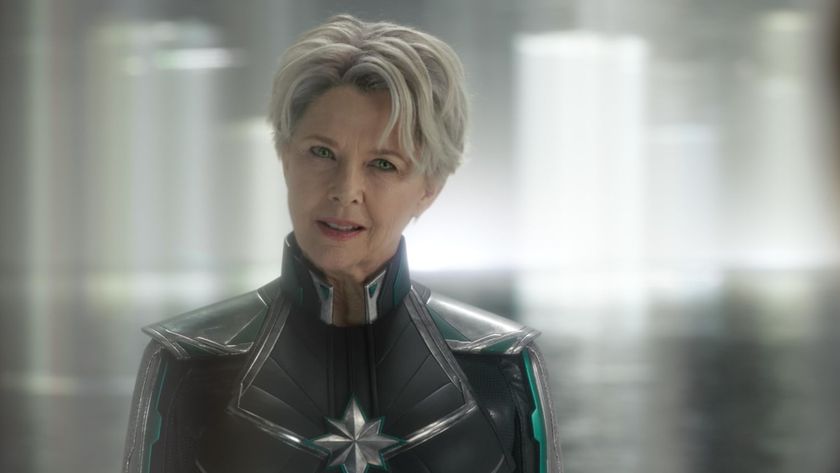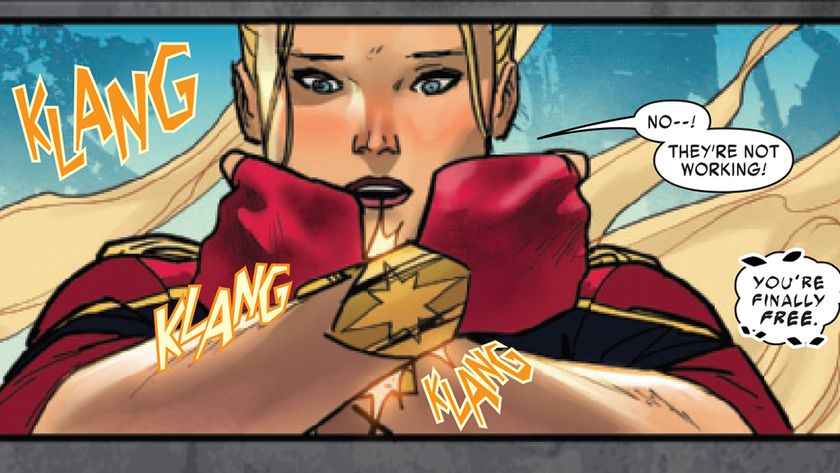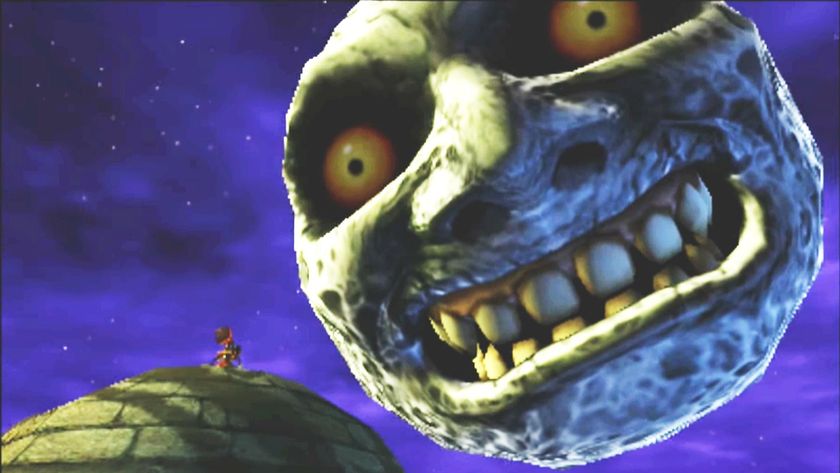12DOVE Verdict
A satisfying standalone launch for Marvel’s latest superhero combines sci-fi action with ’90s nostalgia. Overcoming minor stumbles, it ultimately soars
Why you can trust 12DOVE
As Marvel’s eponymous hero, this Cap was always going to be of huge significance to the franchise. The mysterious hero that Nick Fury called on during Avengers: Infinity War’s credits sting, her long-awaited standalone film is the penultimate Phase 3 instalment before the epochal Avengers 4: Endgame. It also can’t be ignored that this is the first solo film for a female MCU hero, two years after DC’s Wonder Woman. The stakes are high, but like its titular hero, Captain Marvel overcomes some setbacks to attain a triumphant power all its own.
Twenty-one films into their expanded cinematic universe, Marvel has earned a right to confidence, and there’s no hand-holding in this origin story. After a cryptic opening tease speckled with dust, flames and blue blood, the film immediately lurches into hard sci-fi. In a shiny alien Kree city, ‘Vers’ (Brie Larson) is a member of crack military team, Starforce, led by Jude Law’s Yon-Rogg. Vers has photon-blasting hands and has been trained in advanced combat skills, but her memory of her life before Starforce is Jason Bourne-level patchy.
Starforce’s enemy are the shapeshifting Skrulls, a green-skinned, orc-like species. A mission gone wrong sees Vers – and a couple of Skrull enemies – lost way behind enemy lines on planet C-53 (read: Earth). Oh, and this is the mid-’90s, as you’ll know from the fact that Vers crashes through the roof of a fully operational Blockbuster Video. The Skrulls’ ability to assume any form they see leads to some tense and twisty body-snatching rug-pulls, leaving the fledgling S.H.I.E.L.D. scratching their heads.
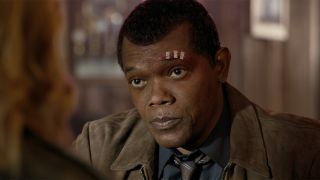
Captain Marvel ending explained - what happens and what it means for Avengers: Endgame
As well as trying to combat the Skrull threat and maintain contact with Starforce, Vers also starts to investigate her own mysterious past while she’s on Earth. Directors Anna Boden and Ryan Fleck and star Larson are best known for grittier, smaller-scale indies than blockbusters, and between them they help to keep the film’s feet on the ground. Initially some of the flashbacks are confusing – expect to have no idea what’s going on at various points during the first act – but Boden and Fleck have a very sure grasp on their hero’s emotional arc, and even if the provenance of our hero’s Kree name will come as a surprise to no one with a passing knowledge of the character, Larson effectively sells her journey of self(re)discovery.
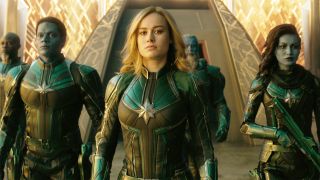
There are also no doubts about Larson’s capability as an action star, fully convincing as an elite soldier who can take down a corridor-ful of Skrulls with her supercharged fire-hands and martial-arts prowess. Even if her one-liners don’t always land, Larson has an extremely easy chemistry with co-star Samuel L. Jackson. This is Nick Fury’s biggest MCU role to date, and most revealing: as this is taking place a couple of decades before the Avenger Initiative started in earnest.
Fury has two working eyes, a full head of hair and a (slightly) less cantankerous attitude: he’s a low-level S.H.I.E.L.D. bod, and this is his first glimpse of the bigger world out there. Jackson’s CGI facelift is hands-down the best example of digital de-aging yet seen in movies (more impressive even than co-star Clark Gregg’s slightly more conspicuous youthfulness), and Jackson is an absolute delight, whether he’s riffing with Larson, playing with crucial cat Goose, or earning his maverick stripes.
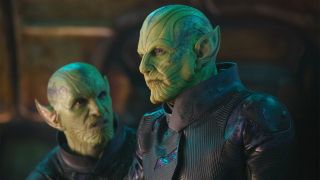
On the other side is Ben Mendelsohn’s Talos, the Skrull leader and primary antagonist. Even though he’s often hidden under an inflexible mask that wouldn’t look out of place on Doctor Who, Mendelsohn manages to do something different with this role, evading cliché and earning a pass for taking yet another big bad role. Elsewhere in the cast, some are inevitably sidelined (Gregg and Gemma Chan don’t get much screen time), but Law’s as reliably charismatic as ever as Vers’ Starforce mentor Yon-Rogg. Another very valuable supporting player is Lashana Lynch as Maria Rambeau, an Air Force pilot with a link to Vers’ past; as the film is refreshingly stripped of any romantic element, this friendship is the key relationship that roots the film.
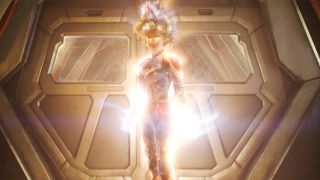
Captain Marvel post-credits scenes explained - what happens and what it means for Avengers: Endgame
The gag rate isn’t as consistent as the funniest Marvel movies, but there’s plenty of humour mined from the ’90s setting (think AltaVista searches and slow dial-up speeds). And even though the Best Of soundtrack feels slightly more calculated than Guardians of the Galaxy’s mixtapes, it undeniably adds to the enjoyably nostalgic setting.
After a slow build-up, once Captain Marvel starts to grasp her powers and untangle her past, the film soars, delivering in terms of epic action and emotional resonance. If it doesn’t quite go higher, further and faster than recent standout standalones Black Panther and Thor: Ragnarok, it also more than lives up to the brand name that it wears with pride.
Find out what else you should be watching out for this year with the most anticipated upcoming movies of 2019.
- Release date: March 8, 2019
- Certificate: 12A (UK)/PG-13 (US)
- Running time: 124 mins

I'm the Editor at Total Film magazine, overseeing the running of the mag, and generally obsessing over all things Nolan, Kubrick and Pixar. Over the past decade I've worked in various roles for TF online and in print, including at 12DOVE, and you can often hear me nattering on the Inside Total Film podcast. Bucket-list-ticking career highlights have included reporting from the set of Tenet and Avengers: Infinity War, as well as covering Comic-Con, TIFF and the Sundance Film Festival.
Most Popular





